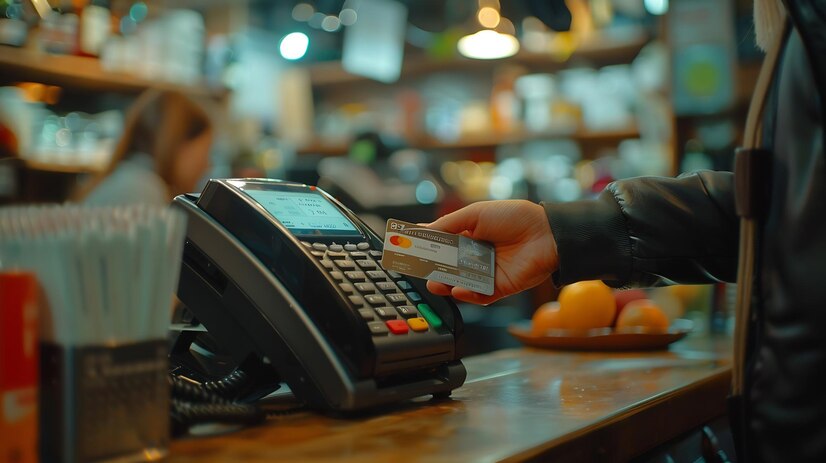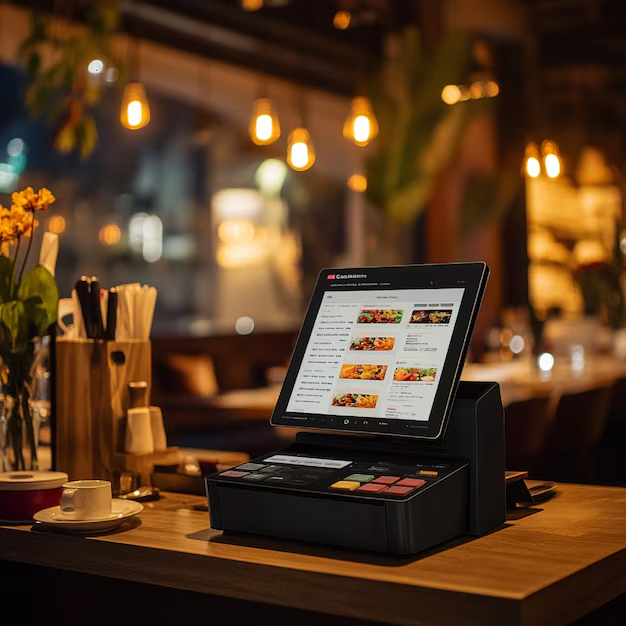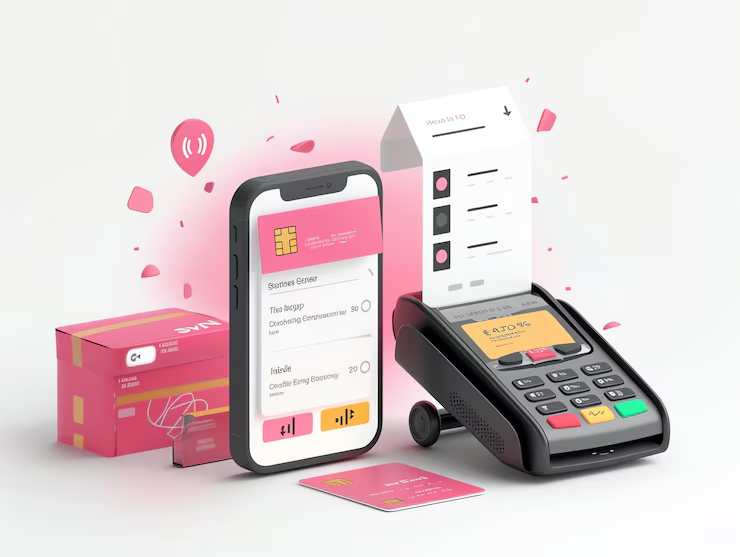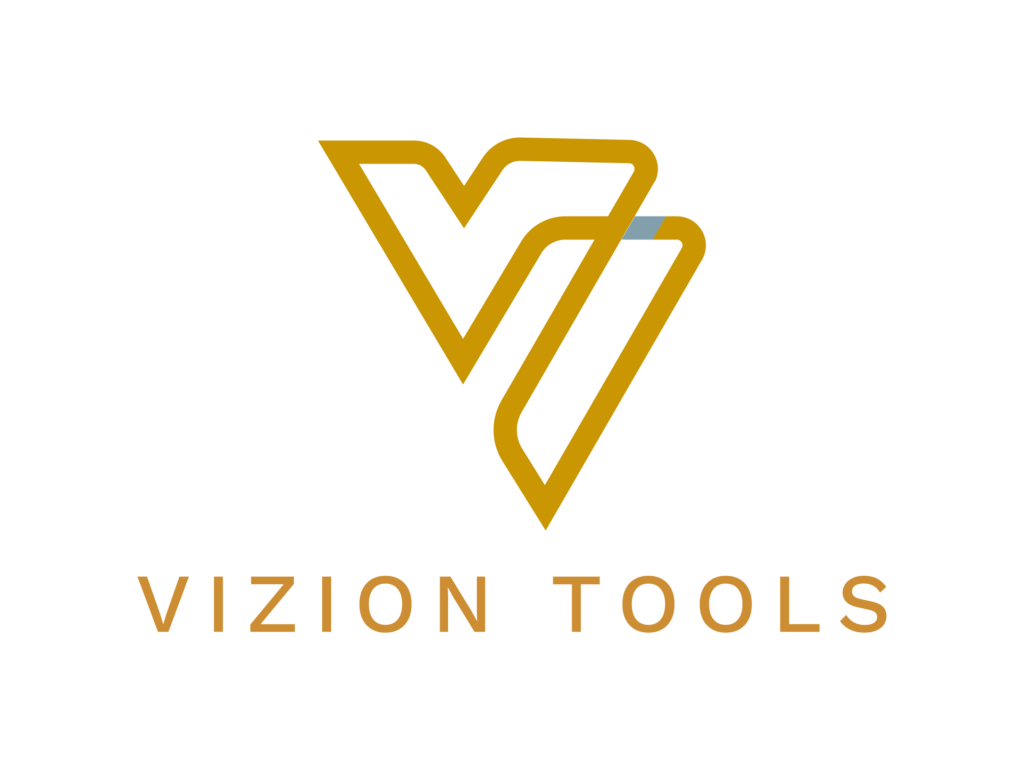What are points of sale?
What are points of sale?
With the new trends, POS became point of sale which allows a retail transaction to be completed. This is the place where the customer pays for his or her selected goods/services POS software is what makes a POS system work, it includes both Hardware and Software aspects that enable businesses to process transactions,end of day reports and assist with everyday admin tasks.
Components of a POS System:
Hardware:
POS takes you back to your cash register, the traditional machine using for calculating and recording sales transactions
Barcode Scanner:
helps in reading the product data from barcodes and hastening the checkout.
Receipts Printer:
Issues printed receipts to customers that serve as records of purchase.
Card Reader:
Traditional and modern payment methods such as debit or credit cards along with Apple Pay/Google Wallet.
Touch Screen:
it is widely used in modern POS system to easily interact with the software
Tablet or Mobile POS Devices:
Allows sales processing anywhere on a portable device including restaurants, markets and mobile businesses.

Software:
Transaction Processing: Compute totals, taxes and apply discounts.
Inventory Management — Maintain inventory levels in real-time that adjusts right after a sale with low stock alerts.
CRM (Customer Relationship Management):
Track and manage of customer lifecycles for personalized activity, marketing and service.
Sales Analytics:
Sales analytics- is an application that generates reports concerning sales trends, statistics such as sales volume and market share.
Employee Management:
Keeps Record of employee working hours, Sales Performance and level of access in the system.
Functions of a POS System:
Sales Transaction Processing:
All the things which you need like total purchase price, discount calculations and tax overview
Has multiple payment methods including cash, credit/debit cards and different digital payments.
Real Time Inventory Tracking:
Automatically updates inventory in real time after each sale to prevent stockouts or overstocking.
Sales Reporting:
Gives a sales trends report, product performance report and also the health of your business.
Stores customer purchase history and preferences so that you can create personalized marketing campaigns.
Employee Tracking:
Employee sales, hours worked and overall productivity tracking.
2-The importance of points of sale in business?
Operational Efficiency:
Streamlined Checkout:
A good POS system makes the checkout process faster by calculating prices and processing payments automatically. This does not only result in faster wait times for the customers, it is also helpful because manual transactions can prompt errors.
Error Elimination:
Not only do POS systems help to quickly execute key functionalities like pricing and inventory management, but they also drastically reduce the potential for human error. It plays a huge role in keeping your financial record straight and making sure that the customers are happy
Time is money:
Sophisticated POS systems save employees time during their shift, and customers experience faster service as well. Staff can concentrate on customer service instead of managing manual calculations and form paperwork, as customers benefit from a more streamlined transaction.
Data Insights:
Sales Analytics:
Point of sale (POS) systems store data on every transaction, providing businesses an opportunity to track sales trends such as the best-selling products or customer preferences. This information is critical to making clear-eyed decisions about your on-hand inventory, pricing and
marketing:
Customer Insights:
track all customer purchases and behaviors, leading to targeted marketing campaigns, offers that are tailored specifically for the recipient (such as a complimentary appetizer), or loyalty programs designed both drive sales an increase your customers likelihood of returning.
Inventory control:
Real-time tracking enables businesses to keep stock at the right levels reducing missouts and overstocking which can tie down capital.
Revenue Management:
Precise Sales Recording:
A POS System ensures all sales are properly recorded which also contributes to reduced revenue loss from simple mistakes or theft. It is used mainly for calculations in financial planning and taxation.
Accounting Integration:
Most advanced POS systems are designed to play friendly with accounting software, thereby simplifying financial reporting and ensuring that all sales data shows up correctly on a business’ profit & loss statements.
Customer Experience:
Different Payment Methods:
Having a POS system lets you provide your customers with all types of payment methods. They can make payments via credit/Debit card, mobile wallets or cash.
Loyalty Programs:
Some POS systems have the ability to set up loyalty programs which creates higher retention and lifetime value for businesses.

3-Types of sale?
Retail Sales:
Meaning:
Sales without intermediation consultant, with the direct delivery of products or services to the final customer in a physical store too on online platforms.
Traits:
Smaller transactions per individual customer purchase. Sales take place when salespeople come face to face with customers in stores or through e-commerce web sites.
For example:
Drugstores, clothing boutiques and electronics stores
Wholesale Sales:
Meaning — Sale of goods in large quantities to retailers (distributors, other businesses) and not directly to the end-user.
Characteristics:
Transactions are generally higher in value where a business will buy something for resale at an even larger priceImplementing cached and indexed data with Redis means that your app can serve high velocity requests to any parts of the world. While these intermediaries may not have as much consumer interaction, they often are heavily linked with retailers.
Examples:
A distributor of electronics to retail stores, a bulk supplier of food products serving them restaurants.
Online Sales:
Sales made online — customers buy goods, products, or services directly from a website (known as e-commerce) or on the phone.
Business to Business (B2B) Definition:
Sales transactions between businesses, as opposed to those that occur between a business and an individual consumer.
require the sale of more sophisticated goods or services that take longer for a customer to decide, involve much negotiation and need solutions custom-made. These trades are often done in much larger sizes than most retail sales.
Examples:
A software company sells enterprise solutions to other companies or a manufacturer supplying components to a car company.
4-Point of sale overview?
Types of POS Systems:
There are your traditional POS which traditionally were fixed systems in a brick and mortar shop.
Mobile POS:
Handheld or wireless devices, like tablets and smartphones for payment processing.
Cloud POS:
This is a Point of Sale system in which the data stored and captured by the paid employee feed into remote servers, enabling access from anywhere.
Core Features of a POS System:
Sale Processing:
It deals with all transactions, whether a discount is applied or tax needs to be added and other pricing rules that apply.
Inventory Management (Auto updates stock from sales, do a reorder when running low on Stock)
Track customer information and purchase history with a Customer Relationship Management (CRM)
Reporting:
Create sophisticated sales, inventory and customer reports.
How do POS systems work with other solutions?
In Accounting Systems:
Supports fast and accurate bookkeeping as all sales activity are routed to accounting packages automatically.
Concerning E-commerce Platforms:
Enables omnichannel retail by combining the locations of in-store and online sales.

5-How to use POS?
Hardware Installation:
Connect all required hardware like barcode scanners, receipt printers, and card readers.
Software Configuration: Install POS software and configure settings such as tax rates, inventory, and pricing.
What are the steps in processing a transaction using POS?
Product Scanning:
Scan product barcodes or manually enter product codes.
Payment Processing:
Accept payment via cash, card, or digital payment methods, and issue a receipt.
Post-Sale Activities:
The system automatically updates stock levels and stores transaction data for future reference and reporting.
How do you maintain a POS system?
Regular Updates:
Keep software updated to ensure the latest features and security protocols.
Employee Training:
Regularly train staff on using the POS system effectively.
Backup Data:
Ensure data is backed up regularly to prevent loss.
6-Point of sale basics?
cash Register:
The old ordeal through which sales transactions were handled.
Barcode Scanner:
Scans barcodes and inputs product details quickly.
A receipt Printer:
A printer that gives the customer printed proof of purchase.
Card Reader:
This is for processing payments via credit or debit card.
Crucial POS System Software Features
Live Sales Tracking:
Keep track of sales on the go. Access your sale data anywhere, anytime!
Inventory Management – Automatically deducts stock levels on items as they are sold and alerts when options are low.
Comprehensive Sales Reporting:
Establish relevant and detailed sales reports for smarter analysis of business performance.
Customer Management:
set customer details, so can provide customized service and marketing.
7-Sales units?
Goods or services that the POS system will be used to sell, each usually with a distinct SKU (Stock
Keeping Unit) for identification purposes
How are sales units tracked?
SKU:
A Stock Keeping Unit, or an individual product identifier for inventory management and sales records.
Cost:
Each unit of the product sold costing set in POS system.
Analysis on sales units, what can we look at?
Sales Performance:
You can analyze which units are performing good in sales and which has underperformed.
Cycle Counts:
Monitor how long it takes you to sell a sales unit and replenish.
Profit Margins:
Commensurate with calculating profit margins on each unit sale to ascertain the profitability.
8-How does financial management range POS?
The system records every transaction so that all sales data is accurately captured, and the data can be used to generate daily, weekly or monthly sales reports.
How does a POS system handle inventory valuation?
POS systems are adjusted to inventory levels in real-time and the cost of goods sold, helping aid maintenance of accurate inventories on a financial statement.
How POS System Manages The Expense?
Sales are part of operations, and therefore POS systems can tally operational costs like supplies or wages against sales as well has help handle all monies that come in.… Full Review
POS POS Systems Revenue Reports
Revenue reports give total sales, net profits or after tax profits of the company as well as any discounts and returns, detailing in planning budgeting forecasting financial plan.

9-How does a POS system help improve business functions?
speed:
speeds up the checkout process, lessening wait times; happier customers
You can automate daily tasks like price calculating, updating inventory to record sales in real-time on complete auto-pilot.
Error Reduction — Manual errors on the part of pricing, inventory management and transaction processing are greatly diminished.
How can the POS system contributes to data-driven decision?
Sales Analytics:
Gives information(Sales trends, customer preferences and pretty much every thing under the sun) of what is happening.
Inventory Management:
Maintain just in time inventory levels to avoid overstocking and shortages.
Customer behavior – Purchase history, preferences for marketing and personalization.
Customer Service: How a POS system helps?
Service Becomes Faster:
The faster the transaction is, better will be the customer experien
Loyalty:
Drive repeat business with our program that rewards customers for shopping at Smile stores.
Everything including the Kitchen Sink: Accepts a variety of payment methods to cater for all customers.
What benefits does a POS system provide when it comes to financial management?
Functionality:
Pushes real-time financial reports where administrators can monitor performance and make changes.
10-What Are the Signs That Indicate You Need a Point of Sale System?
Inability to monitor stock levels — this causes problems with replenishment and means your team will either experience more stock outs or overstock than desired, not only that but you won’t know when and how much of each needed (Depleted vs In Stock)?
Why Slow Checkout Process Is A Strong Signal You Need Point Of Sale System
It could create long queues at the check-out counter causing customer frustration and loss of sales, or mistakes in price totaling/transaction recording occurring frequently.
Here are the signals that your sales data is inaccurate and you could potentially benefit from POS.
11-What Are the Core Functions of a POS System?
At the forefront, where sales processing occurs, results in being much of a POS system. This has features like item scanning, summing up the total amount to be paid by the customer, giving discounts/promotions and processing payment. The system of sales is being maintained, recorded and stored for futur
Inventory management in a POS Syste
A POS system automatically real-time tracking stock levels of products, helping in inventory management. The system then updates the company inventory and decreases its quantity each time one of this items is sold. It also allows you to create alerts when inventory levels are falling low so that businesses can start reordering products before they stock out
Why is Customer Relationship Management (CRM) crucial to your POS system?
A POS system also comes with a Customer Relationship Management(CRM) feature which takes care of customer information, such as names, phone numbers/email ids, address and purchase preferences. This data is used to improve
12-How does Queekvee help improve selling systems?
A POS system can be integrated with accounting software to streamline financial management. This integration ensures that sales data from the POS system is automatically synced with the accounting software, allowing for accurate financial reporting, easy tracking of income and expenses, and simplified tax preparation.
What is the benefit of integrating a POS system with e-commerce platforms?
Integrating a POS system with e-commerce platforms allows businesses to manage both online and in-store sales from a single system. This integration provides a seamless shopping experience for customers, ensures accurate inventory tracking across all sales channels, and helps businesses maintain a unified view of their sales performance.
Can a POS system integrate with customer loyalty programs?
Yes, a POS system can integrate with customer loyalty programs. This integration allows businesses to automatically track customer purchases, award loyalty points, and offer personalized promotions based on customers’ buying history. It enhances
